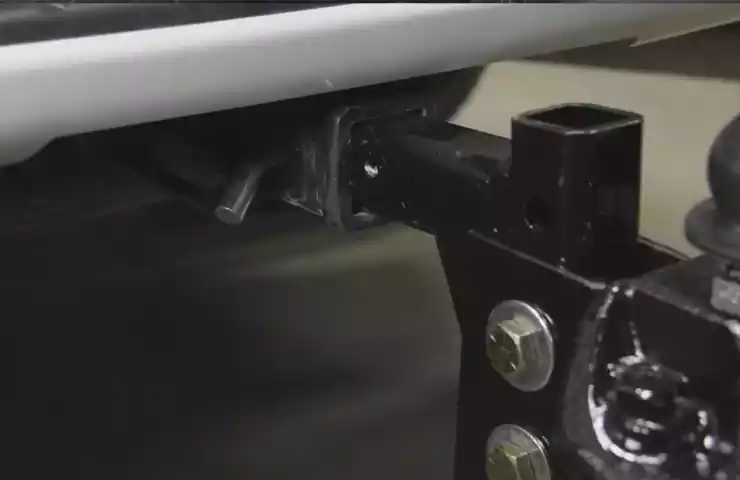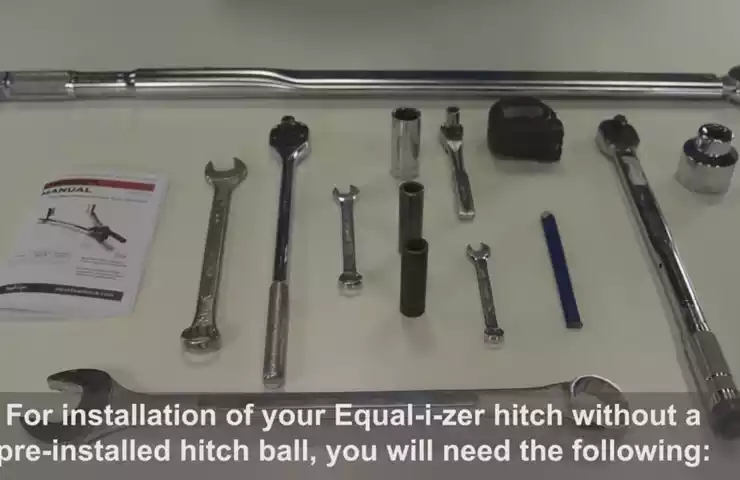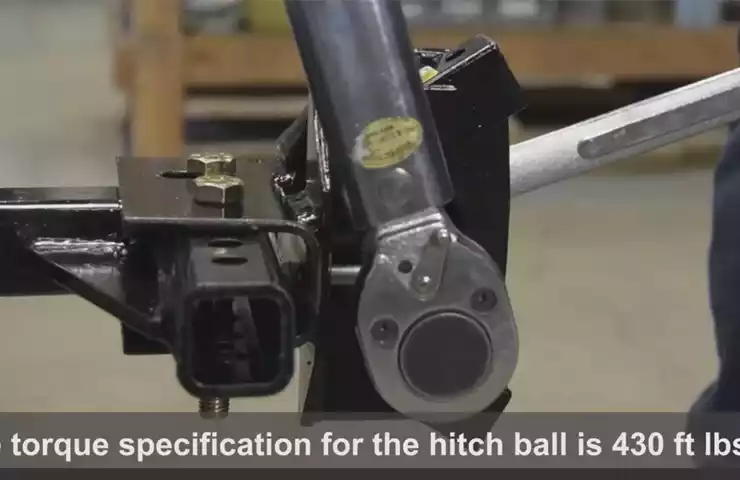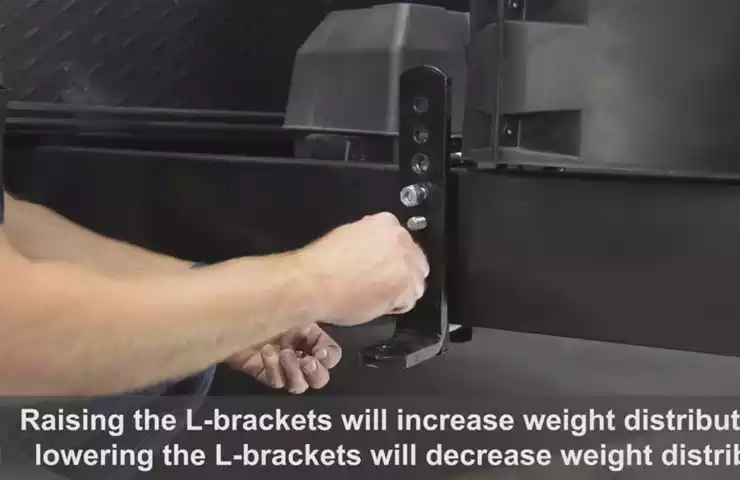To install an equalizer hitch, attach the hitch head to the trailer, adjust the hitch height, connect the spring bars, and secure them with the provided clips or pins. Introducing an equalizer hitch to your towing setup can greatly improve stability, control, and weight distribution.
This ensures a safer and smoother towing experience. Installing an equalizer hitch requires a few simple steps. In this guide, we will walk you through the process, providing clear instructions on how to properly install an equalizer hitch. By following these steps, you will be able to enjoy a more balanced and secure towing experience, reducing the risks associated with trailer sway and uneven weight distribution.
So, let’s get started and learn how to install an equalizer hitch for your towing needs.
Why Use An Equalizer Hitch?
When it comes to towing a trailer, ensuring stability is of utmost importance. Whether you’re hauling a boat, camper, or any other heavy load, using an equalizer hitch can greatly improve your towing experience. An equalizer hitch is a valuable tool that helps distribute the weight of the trailer evenly across all axles of the tow vehicle, resulting in a smoother and safer ride. In this section, we will dive deeper into the benefits of using an equalizer hitch and how it improves towing stability.
Benefits of Using an Equalizer Hitch
Using an equalizer hitch brings numerous advantages to your towing setup. Here are some key benefits:
- Enhanced Stability: One of the primary benefits of using an equalizer hitch is the improved stability it offers. By evenly distributing the weight of the trailer, it prevents excessive swaying and bouncing, providing a more controlled and stable towing experience.
- Reduced Swaying: Swaying can be a major concern while towing, especially during windy or uneven road conditions. An equalizer hitch minimizes sway, ensuring that your trailer stays securely in line with your tow vehicle.
- Better Control: When your trailer is properly balanced and the weight is evenly distributed, you have more control over your entire rig. This makes it easier to maneuver around corners, change lanes, and navigate challenging driving conditions.
- Improved Braking: Towing a heavy load can put strain on your braking system, but with an equalizer hitch, the weight is evenly distributed, reducing stress on the brakes. This results in improved braking performance, shorter stopping distances, and increased safety.
- Reduced Wear and Tear: Uneven weight distribution can cause excessive wear on tires, suspension, and other components of both your tow vehicle and trailer. By using an equalizer hitch, you help minimize the wear and tear, extending the lifespan of your equipment.

How an Equalizer Hitch Improves Towing Stability
An equalizer hitch plays a crucial role in improving towing stability by addressing two main factors:
- Weight Distribution: When towing a heavy load, the weight distribution between your tow vehicle and trailer can have a significant impact on stability. An equalizer hitch ensures that the weight is evenly distributed across all axles, preventing excessive weight on either end, which could lead to swaying.
- Height Alignment: Maintaining proper height alignment between the trailer and the tow vehicle is vital for stability. An equalizer hitch allows you to adjust the height, ensuring that the trailer remains level with the tow vehicle. This level alignment keeps the center of gravity balanced and reduces the risk of swaying or fishtailing.
In conclusion, using an equalizer hitch brings numerous benefits, including enhanced stability, reduced swaying, better control, improved braking, and reduced wear and tear. By addressing weight distribution and height alignment, an equalizer hitch significantly improves towing stability, providing a safer and more enjoyable towing experience.
Pre-Installation Preparation
Before you begin installing an equalizer hitch, there are a few important steps to take to ensure a smooth and successful process. Pre-installation preparation is crucial in order to choose the right hitch for your trailer and gather all the necessary tools for the installation. Let’s dive into each step in detail, so you can get started with confidence.

Choosing the right equalizer hitch for your trailer
Choosing the right equalizer hitch for your trailer is essential for safe towing. Different trailers have varying weights and tongue loads, so it’s crucial to select a hitch that can handle the specific requirements of your trailer. When choosing an equalizer hitch, consider the following factors:
- The weight and tongue load of your trailer
- The towing capacity of your vehicle
- The type of towing you’ll be doing (such as long-distance or off-road)
To ensure a proper fit, consult your trailer’s owner manual or contact the manufacturer for specific recommendations. It’s important to choose a hitch that can handle the weight distribution and provide stability during towing.
Gathering the necessary tools for installation
Once you have chosen the right equalizer hitch for your trailer, the next step is to gather all the necessary tools for the installation. Here is a list of the common tools you will need:
| Tools | Description |
|---|---|
| Socket wrench set | A set of different-sized socket wrenches to tighten and loosen bolts and nuts |
| Torque wrench | A tool used to apply a specific amount of torque to fasteners, ensuring they are tightened to the correct specifications |
| Jack and jack stands | To lift and secure the trailer for installation |
| Measuring tape | To measure the distance between the trailer frame and the ground for proper hitch adjustment |
| Level | To ensure the trailer and hitch are level during installation |
| Grease | To lubricate moving parts of the hitch |
| Safety gloves | To protect your hands during the installation process |
Having these tools readily available will make the installation process much easier and efficient. It’s also important to wear appropriate safety gear, such as safety gloves, to protect yourself during the installation.
Now that you know the importance of pre-installation preparation, including choosing the right equalizer hitch for your trailer and gathering all the necessary tools, you’re ready to move on to the next step: installing the equalizer hitch. Stay tuned for our next blog post where we will guide you through the installation process, ensuring a safe and secure towing experience.

Step-By-Step Instructions For Installing An Equalizer Hitch
Installing an equalizer hitch is an important step in ensuring a safe and smooth towing experience. By properly installing the hitch, you can improve weight distribution and control sway, making your towing setup more stable. In this guide, we will provide step-by-step instructions for installing an equalizer hitch, from positioning the trailer and tow vehicle, to fine-tuning the setup for optimal towing performance.
Positioning the trailer and tow vehicle for installation
The first step in installing an equalizer hitch is to properly position the trailer and tow vehicle. This ensures that the hitch and weight distribution bars can be attached correctly. Follow these steps:
- Park the tow vehicle and trailer on a level surface.
- Ensure that the trailer is in line with the tow vehicle, with the coupler directly above the hitch receiver.
- Lower the trailer’s tongue onto the hitch receiver and engage the coupler latch to secure the connection.
Attaching the hitch head to the trailer coupler
Once the trailer and tow vehicle are properly positioned, you can proceed to attach the hitch head to the trailer coupler. Follow these steps:
- Position the hitch head over the trailer’s coupler, making sure the hitch ball is centered.
- Lower the hitch head onto the coupler until it fully engages.
- Secure the hitch head to the coupler using the provided hitch pin and clip or lock.

Adjusting the weight distribution bars
After attaching the hitch head, it’s important to properly adjust the weight distribution bars to ensure proper weight distribution across the tow vehicle and trailer. Follow these steps:
- Insert the weight distribution bars into the hitch head.
- Tighten the tension bolts or chains on the weight distribution bars according to the manufacturer’s instructions.
- Ensure that the weight distribution bars are level and parallel to the ground.
Connecting the trailer to the tow vehicle
With the hitch head and weight distribution bars properly adjusted, you can now connect the trailer to the tow vehicle. Follow these steps:
- Raise the trailer’s tongue by using the jack or dolly.
- Reverse the tow vehicle slowly until the hitch ball is directly under the trailer coupler.
- Lower the trailer’s tongue onto the hitch ball, ensuring that it fully engages.
- Latch the coupler to secure the connection, and raise the trailer’s jack or dolly.
Fine-tuning the setup for optimal towing performance
Before hitting the road, it’s important to fine-tune your equalizer hitch setup to ensure optimal towing performance. Follow these steps:
- Check the levelness of the tow vehicle and trailer by using a leveling tool.
- If necessary, adjust the tension bolts or chains on the weight distribution bars to achieve proper weight distribution.
- Test the towing setup by driving at a slow and controlled speed, making adjustments as needed.
By following these step-by-step instructions, you can install an equalizer hitch correctly and enjoy a safer and more comfortable towing experience.

Tips And Troubleshooting
Tips and Troubleshooting
Installing an equalizer hitch can greatly improve the towing experience by distributing weight evenly and reducing sway. However, like any mechanical installation, it can come with its fair share of challenges. In this section, we will explore some common issues that may arise during the installation process, as well as the maintenance and regular inspection required to keep your equalizer hitch in optimal condition.
Common issues and their solutions during installation
When installing an equalizer hitch, it’s important to be aware of potential issues that may arise. Here are some common problems and their suggested solutions:
- Improper weight distribution: If your trailer is not properly balanced after installation, it can lead to handling and stability issues. Make sure to follow the manufacturer’s guidelines for the correct weight distribution for your trailer and adjust the tension on the equalizer bars accordingly.
- Uneven leveling:If your trailer is not level after installation, it can put excess strain on the hitch and affect towing performance. Check the leveling of your trailer using a bubble level and make necessary adjustments to the hitch head height or shank angle to achieve a level position.
- Noise and squeaks: Excessive noise and squeaks can be a result of friction and lack of lubrication. Regularly inspect the pivot points, hinge joints, and any moving parts of the equalizer hitch for signs of wear or dryness. Apply a high-quality lubricant to these areas to reduce noise and improve performance.
- Loose bolts and nuts: Over time, the vibrations from towing can cause bolts and nuts to become loose. After installation, make it a habit to periodically check and tighten all fasteners, including the hitch ball, head assembly, and sway control brackets, to ensure they are secure and prevent any potential accidents.

Maintenance and regular inspection of the equalizer hitch
Maintaining and regularly inspecting your equalizer hitch is essential for its long-term performance and durability. Here are some key points to keep in mind:
- Keep it clean: Regularly clean the equalizer hitch to remove dirt, debris, and rust that can affect its performance. Use a mild soap solution and a soft brush to clean all surfaces, paying extra attention to the pivot points and moving parts.
- Check for wear and tear: Inspect the equalizer hitch for any signs of wear, such as cracks, bent parts, or rust. Pay close attention to the sway control brackets, spring bars, and head assembly. If you notice any damage or deterioration, contact the manufacturer for appropriate repairs or replacements.
- Inspect the fasteners: Regularly check and tighten all bolts and nuts to ensure they are secure. Look for any signs of looseness or excessive wear. If you encounter stripped threads or damaged components, replace them immediately.
- Refer to the manufacturer’s guidelines: Each equalizer hitch may have specific maintenance requirements. Follow the manufacturer’s guidelines for lubrication, torque specifications, and any other recommended maintenance tasks to maintain optimal performance.
By understanding and addressing common installation issues and following a regular maintenance routine, you can ensure that your equalizer hitch functions effectively and enhances your towing experience. Remember to consult the manufacturer’s instructions and seek professional assistance if you encounter any difficulties during installation or maintenance.
Frequently Asked Questions On How To Install A Equalizer Hitch
How Do You Install A Load Equal-I-Zer Hitch?
To install a load Equal-i-zer hitch, follow these steps: 1. Position the hitch head on the trailer frame. 2. Attach the spring bars to the hitch head using provided hardware. 3. Insert the hitch ball into the hitch head and tighten it securely.
4. Adjust the spring bars to the correct tension using the integrated sway control. 5. Double-check all connections and ensure the hitch is properly installed.

Is A Equal-I-Zer Hitch Worth It?
Yes, an Equal-i-zer hitch is worth it as it provides superior sway control and weight distribution for safer towing. It ensures a smoother ride, reduces trailer sway, and increases stability.
How Many Washers Do I Need For An Equal-I-Zer Hitch?
You typically need four washers for an Equal-i-zer hitch.
Does An Equal-I-Zer Hitch Increase Towing Capacity?
No, an Equal-i-zer hitch does not increase towing capacity. It helps distribute weight and improve stability while towing, but the capacity remains the same.
Conclusion
Installing an equalizer hitch is a straightforward process that can greatly improve towing stability and safety. By following the step-by-step instructions provided in this blog post, you can easily set up your hitch and ensure a smooth and controlled towing experience.
With the right tools and a little patience, you’ll be ready to hit the road with confidence in no time. Happy towing!
